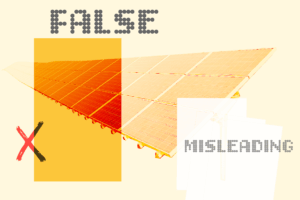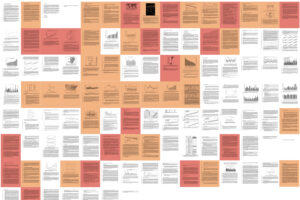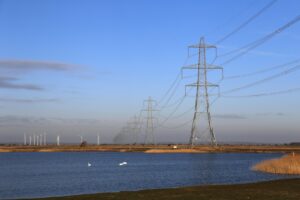A claim that UK gas produced in the North Sea emits “four times” less carbon dioxide (CO2) than imported liquified natural gas (LNG) featured prominently in both the Guardian and the Daily Telegraph this week.
It came after Conservative leader Kemi Badenoch announced a pledge to drill “all” the remaining oil and gas in the North Sea, reigniting debates about new fossil-fuel production in the UK.
The claim that “UK gas is almost four times cleaner” than LNG imports was first made by a North Sea Transition Authority report in 2023 and is often repeated by senior Conservative politicians, as well as other public figures.
However, this figure is highly misleading.
It only refers to the emissions that come from the process of extracting and delivering the gas, which are much smaller than those from burning it.
When both extraction and burning of the gas are taken into account, CO2 emissions from UK production are only around 15% lower than those from LNG imports, Carbon Brief analysis shows.

Focusing on LNG imports alone is also misleading.
Official data shows that, from January to June 2025, the majority of UK gas imports came via pipeline from Norway.
Over this period, the UK imported 156,599 gigawatt hours (GWh) of gas from Norway via pipeline, the data shows. Its total LNG imports from all countries came to 82,378GWh.
An analysis published in 2022 found that, on average, emissions from extracting and processing gas in the UK North Sea are nearly three times higher than those from Norwegian production.
Previous analysis from the Climate Change Committee found that there is a small emissions “advantage” when UK oil and gas production is compared to the global average.
However, the CCC added that this emissions advantage would be wiped if increased production in the UK boosted global gas demand even fractionally, because it would lead to higher overall fossil-fuel use.
The UN Emissions Gap Report in 2023 said that the coal, oil and gas extracted over the lifetime of producing and under-construction mines and fields as of 2018 “would emit more than 3.5 times the carbon budget available” for meeting the Paris Agreement’s aim of keeping temperatures at 1.5C above pre-industrial levels.
The world’s highest international court recently gave a landmark opinion stating that granting new fossil-fuel exploration licences “may constitute an internationally wrongful act” attributable to the state issuing them.
This is based on a wide body of scientific evidence on how fossil-fuelled climate change has endangered people and ecosystems.
Output from the North Sea is already in decline. Oil production peaked in 1999, while gas production in the UK continental shelf peaked in 2000.
After decades of drilling, the majority of reserves left in the North Sea is oil. Contrary to claims that it would increase energy security or bring down bills to issue new licences, around 80% of oil produced in UK waters is currently exported to the global market.
The post Factcheck: North Sea gas is not ‘four times cleaner’ than LNG imports appeared first on Carbon Brief.
Factcheck: North Sea gas is not ‘four times cleaner’ than LNG imports
Climate Change
Greenpeace activists arrested by police helicopter after seven-hour protest on coal ship
NEWCASTLE, Sunday 30 November 2025 — Two Greenpeace Australia Pacific activists have been arrested by specialist police on a coal ship outside the Port of Newcastle, following a more than seven-hour-long peaceful protest during Rising Tide’s People’s Blockade today.
Photos and footage here
Three activists safely climbed and suspended from coal ship Yangze 16 at around 8:00am AEDT on Sunday, halting its operations and preventing its 12:15pm arrival into the Port of Newcastle. One of the activists, who was secured to the anchor chain, disembarked safely due to changing weather conditions. The other two activists, who were expertly secured to the side of the ship and holding a banner that read: PHASE OUT COAL AND GAS, were arrested at around 3:30pm by police climbers, who landed by helicopter on the ship around 1:45pm.
At the time of writing, no charges have been laid.
It comes as two other coal ships in two days were stopped by a peaceful flotilla at the People’s Blockade of the Port of Newcastle, the world’s biggest coal port. The port has been closed for the rest of Sunday as a result.
From the shore at the People’s Blockade, Joe Rafalowicz, Head of Climate and Energy at Greenpeace Australia Pacific, said:
“The right to peaceful protest is a fundamental pillar of a healthy democracy and a basic right of all Australians. Change requires showing up and speaking out, and that’s what our activists are doing in Newcastle today.
“As the world’s third-largest fossil fuel exporter, Australia plays an outsized role in the climate crisis. Peaceful protest to call on the Albanese government to set a timeline to phase out coal and gas, and stop approving new fossil fuel projects, is legitimate and valuable. Greenpeace Australia Pacific stands by and supports our activists, and stands with all peaceful climate defenders who are advocating for real climate action at the Blockade, and all around Australia.”
—ENDS—
For more information or to arrange an interview, please contact:
Kimberley Bernard: +61 407 581 404 or kbernard@greenpeace.org
Lucy Keller: +61 491 135 308 or lkeller@greenpeace.org
Greenpeace activists arrested by police helicopter after seven-hour protest on coal ship
Climate Change
From Brazil, with love
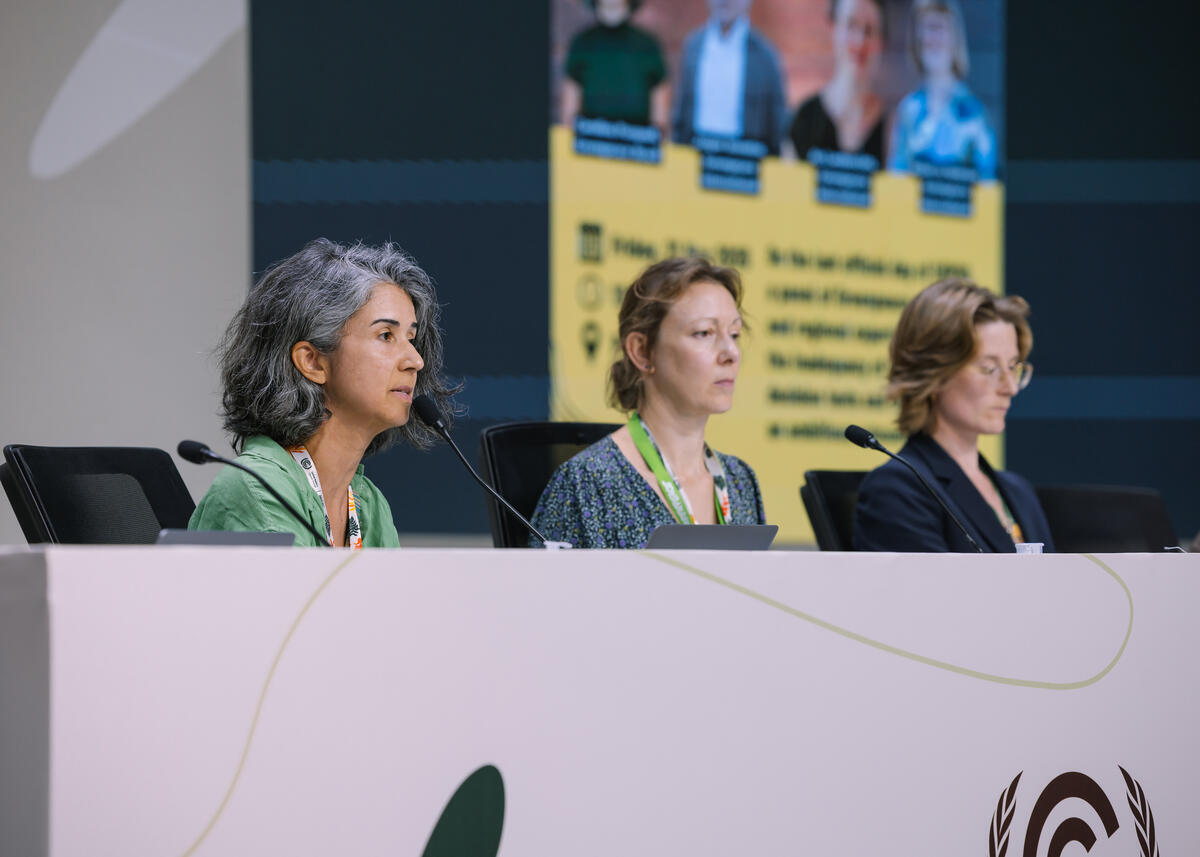
About halfway through the most recent United Nations’ annual climate change conference, COP30 in Belém, Carolina Pasquali, my counterpart at Greenpeace Brazil, started to lose her voice. She was suffering from the kind of hoarseness that kicks in when you have been speaking so much that your vocal cords become inflamed.
Carolina’s voice may have become tired during COP30, but she never fell silent. On the last morning of COP30, at Greenpeace’s final press briefing, I found myself standing behind Carolina as a press pack swarmed her, seeking answers to what was happening.
‘Who is that woman?’ I overheard one of the 56,118 registered delegates ask another.
‘With a crowd like that, she must be the Brazilian environment minister’, was the reasoned but inaccurate answer.
With Brazil hosting COP30, and particularly given the storied history of Greenpeace Brazil as a defender of the Amazon rainforest, Carolina carried an enormous load of leadership and advocacy in the lead-up and during the event. It is no wonder her voice was feeling the strain.
I’ve had the privilege of working with Carolina as part of the Greenpeace global leadership community for a few years now, and she’s an excellent colleague—thoughtful, principled, strategic, a brilliant public speaker, and in possession of a wonderful, wry sense of humour. She’s a friend and a terrific leader whom I admire deeply.
It had been Greenpeace Brazil’s vision that emergency action to halt deforestation was core to the demands that civil society brought to the COP. Given the event’s location in the Amazon, it seemed axiomatic that the goal of phasing out fossil fuels must be accompanied by the other critical half of the climate challenge: addressing deforestation, the second-largest driver of climate change.
Late in the afternoon on the second-last day of the COP, a fire broke out in the middle of the venue, sending a huge fork of flame towards the sky. It was a terrifying moment for those present in the venue. Thankfully, due to good design, the wise use of non-flammable materials, and the rapid response of first responders, there were no fatalities or serious injuries.
In her next speech, Carolina thanked those who had fought the blaze and overseen the evacuation, for their speed and bravery. And she reflected with due gravitas, this is what humanity can do: act together in the face of an emergency—whether that be a fire in a building or our whole planet facing global heating.
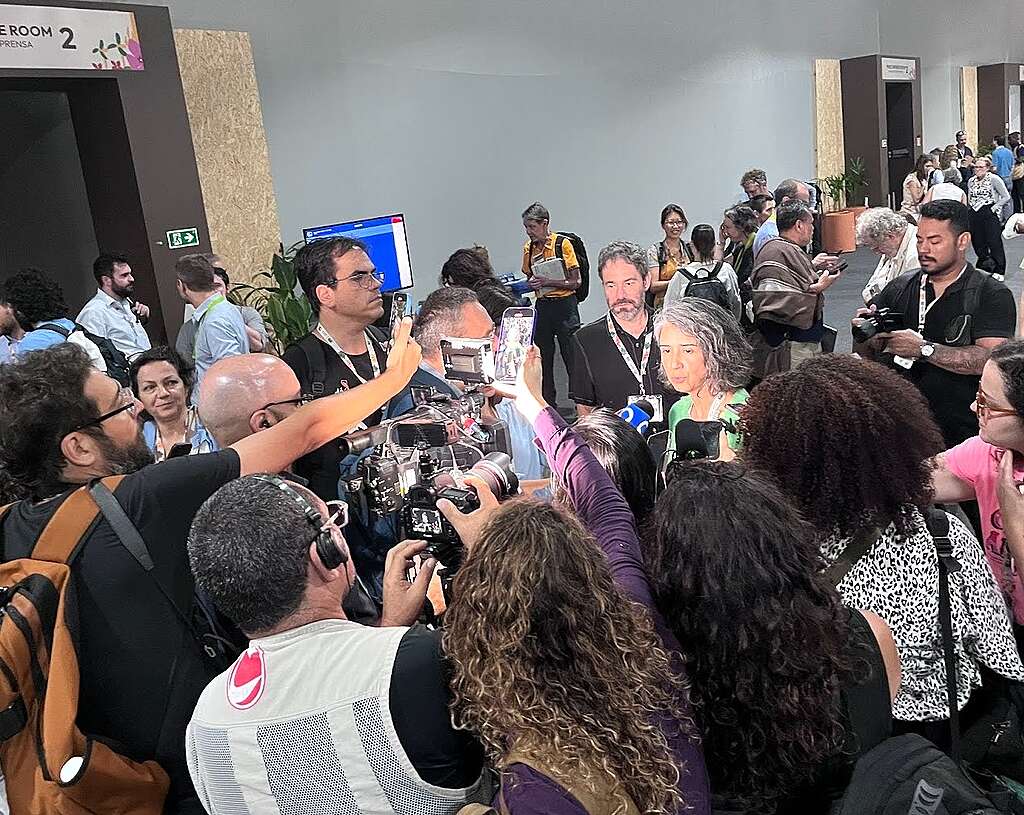
As it happened, COP30 got within striking distance of delivering a response that was fit for purpose in our times of planetary emergency, with support from a critical mass of countries for formal roadmaps to end deforestation as well as transition away from fossil fuels. But the official text ultimately fell short in the final hours of negotiations. As Carolina said: ‘while many governments are willing to act, a powerful minority is not.’
In these moments of failure by politicians and negotiators, it would be easy to give in to legitimate feelings of anger and frustration; but the task before us is to appraise every moment for opportunities for momentum. And the critical mass of nations that are committed to roadmaps for ending deforestation and phasing out fossil fuels offered light amidst the gloom.
And so we follow the path. We take the chances. We think through the next phase of strategy. And onwards. As Carolina said simply, ‘the work now continues.’
I’m not only grateful for Carolina’s friendship and for Greenpeace Brazil’s steadfast dedication to tackling deforestation in the Amazon, but for the entire Greenpeace network’s shared commitment.
Greenpeace is relied on for some heavy lifting at climate COPs, and our team consisted of policy experts, campaigners and other specialists from various geographies who brought their deep policy, communications, and campaigning expertise from around the world to the event,. Our morning briefings, sharing analysis, agreeing on focus and assigning tasks for the day, were possessed of that special energy that comes from a group of many backgrounds working very long hours together in common cause.
I’ve reflected over my time with Greenpeace, that when I visit any of our offices, bases or vessels, anywhere in the world, I feel at home. I am confident that you would have the same sensation of coming home too, because if you are reading this, then you are part of Greenpeace too–you, and me, Carolina, and the tens of millions of people all over the world that share our common vision of an earth restored to flourishing.
So on we go. The work continues, in love and hope, together.

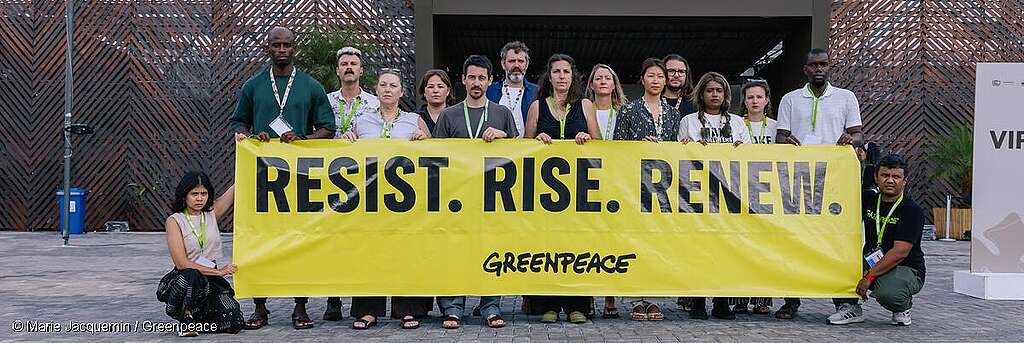
Q & A
In the aftermath of the collapse of Australia’s COP31 bid, many people have reached out to ask: What happened? Why didn’t Australia get COP31? And what now?
In the lead-up to November’s COP, nobody in Australia would have anticipated that we would not be welcoming the global climate community to Adelaide next summer. Up until the very final moment when Climate and Energy Minister Chris Bowen told reporters that Türkiye would host COP31 with Australia assuming the role of president of negotiations, hope was alive that we would clinch the deal.
I suspect that the full picture of why the COP31 bid slipped through our hands is a complex mix of factors, some of which may never come to light in the public domain. What we do know is that in the UNFCCC system, decisions on COP hosts are made by full consensus rather than voting. So, for as long as Turkiye declined to withdraw its bid, it was never a done deal.
Much will no doubt be said about whether Australia could have done more to boost our chances of securing the bid. But as I said in the immediate aftermath of the announcement, whatever the forum, whoever the President, the urgency and focus of our actions cannot change. Phasing out fossil fuels and ending deforestation must be at the core of the COP31 agenda.
The task for Chris Bowen will now be to use his role as president of negotiations to drive global emissions reductions at speed and scale consistent with the Paris Agreement.
Climate Change
Greeks Challenge EU-Backed Fish Farms Amid Environmental Concerns
The country is one of the top producers of farmed fish in the EU, which has promoted aquaculture as an environmentally sustainable option for food security within the bloc.
For Dimitris Kaleantopoulos, the mud is most disconcerting. When he sets out in his fishing boat, the waters of the Aegean Sea are clear enough for him to see quite a ways down. He says that for large patches of the shallow waters that encircle his village on the Greek island of Evia, where there were once meadows of wavering sea grass and schools of minute silver fish, there is now a thick layer of sludge. “It’s a quagmire,” he said.
Greeks Challenge EU-Backed Fish Farms Amid Environmental Concerns
-
Climate Change4 months ago
Guest post: Why China is still building new coal – and when it might stop
-
Greenhouse Gases4 months ago
Guest post: Why China is still building new coal – and when it might stop
-
Climate Change2 years ago
Spanish-language misinformation on renewable energy spreads online, report shows
-

 Greenhouse Gases2 years ago
Greenhouse Gases2 years ago嘉宾来稿:满足中国增长的用电需求 光伏加储能“比新建煤电更实惠”
-
Climate Change Videos2 years ago
The toxic gas flares fuelling Nigeria’s climate change – BBC News
-

 Climate Change2 years ago
Climate Change2 years ago嘉宾来稿:满足中国增长的用电需求 光伏加储能“比新建煤电更实惠”
-

 Carbon Footprint2 years ago
Carbon Footprint2 years agoUS SEC’s Climate Disclosure Rules Spur Renewed Interest in Carbon Credits
-
Renewable Energy5 months ago
US Grid Strain, Possible Allete Sale

